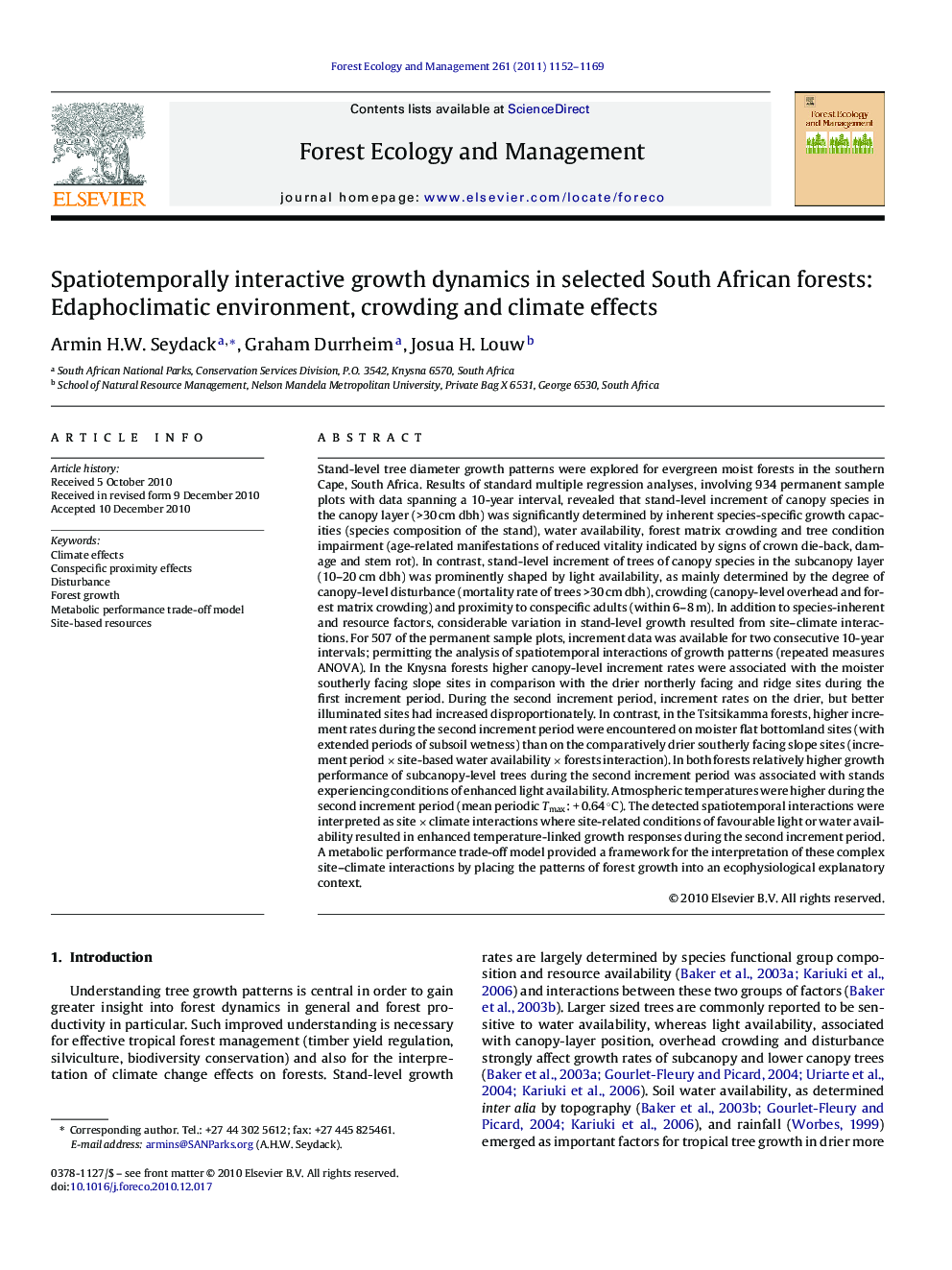| کد مقاله | کد نشریه | سال انتشار | مقاله انگلیسی | نسخه تمام متن |
|---|---|---|---|---|
| 87727 | 159264 | 2011 | 18 صفحه PDF | دانلود رایگان |

Stand-level tree diameter growth patterns were explored for evergreen moist forests in the southern Cape, South Africa. Results of standard multiple regression analyses, involving 934 permanent sample plots with data spanning a 10-year interval, revealed that stand-level increment of canopy species in the canopy layer (>30 cm dbh) was significantly determined by inherent species-specific growth capacities (species composition of the stand), water availability, forest matrix crowding and tree condition impairment (age-related manifestations of reduced vitality indicated by signs of crown die-back, damage and stem rot). In contrast, stand-level increment of trees of canopy species in the subcanopy layer (10–20 cm dbh) was prominently shaped by light availability, as mainly determined by the degree of canopy-level disturbance (mortality rate of trees >30 cm dbh), crowding (canopy-level overhead and forest matrix crowding) and proximity to conspecific adults (within 6–8 m). In addition to species-inherent and resource factors, considerable variation in stand-level growth resulted from site–climate interactions. For 507 of the permanent sample plots, increment data was available for two consecutive 10-year intervals; permitting the analysis of spatiotemporal interactions of growth patterns (repeated measures ANOVA). In the Knysna forests higher canopy-level increment rates were associated with the moister southerly facing slope sites in comparison with the drier northerly facing and ridge sites during the first increment period. During the second increment period, increment rates on the drier, but better illuminated sites had increased disproportionately. In contrast, in the Tsitsikamma forests, higher increment rates during the second increment period were encountered on moister flat bottomland sites (with extended periods of subsoil wetness) than on the comparatively drier southerly facing slope sites (increment period × site-based water availability × forests interaction). In both forests relatively higher growth performance of subcanopy-level trees during the second increment period was associated with stands experiencing conditions of enhanced light availability. Atmospheric temperatures were higher during the second increment period (mean periodic Tmax: + 0.64 °C). The detected spatiotemporal interactions were interpreted as site × climate interactions where site-related conditions of favourable light or water availability resulted in enhanced temperature-linked growth responses during the second increment period. A metabolic performance trade-off model provided a framework for the interpretation of these complex site–climate interactions by placing the patterns of forest growth into an ecophysiological explanatory context.
Research highlights
► In addition to inherent species and site-linked resource factors, canopy-layer tree growth was notably affected by age-related tree condition.
► Growth of trees at the subcanopy level was constrained by factors limiting light availability (overhead crowding), but also through the mere proximity of conspecific adults (independent of light availability).
► Tree growth was subject to complex site–climate interactions: growth responses to increased atmospheric temperature were modified depending on inherent light availability at the subcanopy level in the stand and water availability of the site.
► The nature of site–climate interactions furthermore differed between ecophysiologically differentiated forests.
Journal: Forest Ecology and Management - Volume 261, Issue 7, 1 April 2011, Pages 1152–1169